new posts in all blogs
Viewing: Blog Posts Tagged with: Diana Lopez, Most Recent at Top [Help]
Results 1 - 5 of 5
How to use this Page
You are viewing the most recent posts tagged with the words: Diana Lopez in the JacketFlap blog reader. What is a tag? Think of a tag as a keyword or category label. Tags can both help you find posts on JacketFlap.com as well as provide an easy way for you to "remember" and classify posts for later recall. Try adding a tag yourself by clicking "Add a tag" below a post's header. Scroll down through the list of Recent Posts in the left column and click on a post title that sounds interesting. You can view all posts from a specific blog by clicking the Blog name in the right column, or you can click a 'More Posts from this Blog' link in any individual post.

By: Samantha McGinnis,
on 6/4/2014
Blog:
First Book
(
Login to Add to MyJacketFlap)
JacketFlap tags:
Literacy,
Book lists,
Books & Reading,
Marketplace,
Authors & Illustrators,
Jennifer L. Holm,
Summer Reading,
Katherine Applegate,
Gary Paulsen,
Rita Williams-Garcia,
Diana Lopez,
Add a tag
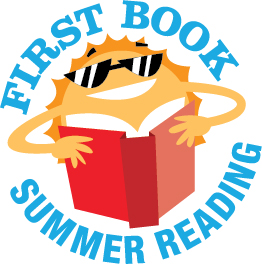 Our favorite picks for summer reading continue this week with a list of the best titles to keep kids in fifth and sixth grade reading during sunny summer days (and cloudy ones, too!)
Our favorite picks for summer reading continue this week with a list of the best titles to keep kids in fifth and sixth grade reading during sunny summer days (and cloudy ones, too!)
Sign up to receive more great book lists, tip sheets and summer fun from First Book!
If you work with kids in need, you can find these titles on the First Book Marketplace by clicking on the pictures next to the publisher descriptions of each book.
For Grades 5 to 6
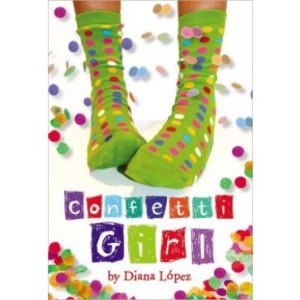 Confetti Girl by Diana Lopez
Confetti Girl by Diana Lopez
Apolonia “Lina” Flores is a sock enthusiast, a volleyball player, a science lover, and a girl who’s just looking for answers. Even though her house is crammed full of books (her dad’s a bibliophile), she’s having trouble figuring out some very big questions, like why her dad seems to care about books more than her, why her best friend’s divorced mom is obsessed with making cascarones (hollowed eggshells filled with colorful confetti), and, most of all, why her mom died last year. Like colors in cascarones, Lina’s life is a rainbow of people, interests, and unexpected changes.
In her first novel for young readers, Diana López creates a clever and honest story about a young Latina girl navigating growing pains in her South Texan city.
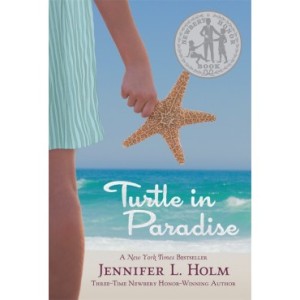 Turtle in Paradise by Jennifer L. Holm
Turtle in Paradise by Jennifer L. Holm
In Jennifer L. Holm’s New York Times bestselling, Newbery Honor winning middle grade historical fiction novel, life isn’t like the movies. But then again, 11-year-old Turtle is no Shirley Temple. She’s smart and tough and has seen enough of the world not to expect a Hollywood ending. After all, it’s 1935 and jobs and money and sometimes even dreams are scarce. So when Turtle’s mama gets a job housekeeping for a lady who doesn’t like kids, Turtle says goodbye without a tear and heads off to Key West, Florida to live with relatives she’s never met. Florida’s like nothing Turtle’s ever seen before though. It’s hot and strange, full of rag tag boy cousins, family secrets, scams, and even buried pirate treasure! Before she knows what’s happened, Turtle finds herself coming out of the shell she’s spent her life building, and as she does, her world opens up in the most unexpected ways. Filled with adventure, humor and heart, Turtle in Paradise is an instant classic both boys and girls with love.
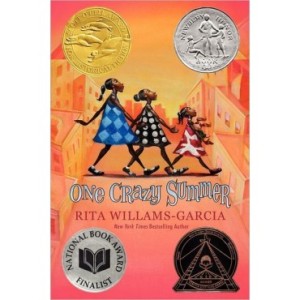 One Crazy Summer by Rita Williams-Garcia
One Crazy Summer by Rita Williams-Garcia
Eleven-year-old Delphine has it together. Even though her mother, Cecile, abandoned her and her younger sisters, Vonetta and Fern, seven years ago. Even though her father and Big Ma will send them from Brooklyn to Oakland, California, to stay with Cecile for the summer. And even though Delphine will have to take care of her sisters, as usual, and learn the truth about the missing pieces of the past.
When the girls arrive in Oakland in the summer of 1968, Cecile wants nothing to do with them. She makes them eat Chinese takeout dinners, forbids them to enter her kitchen, and never explains the strange visitors with Afros and black berets who knock on her door. Rather than spend time with them, Cecile sends Delphine, Vonetta, and Fern to a summer camp sponsored by a revolutionary group, the Black Panthers, where the girls get a radical new education.
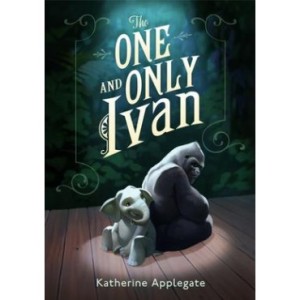 The One and Only Ivan by Katherine Applegate
The One and Only Ivan by Katherine Applegate
Ivan is an easygoing gorilla. Living at the Exit 8 Big Top Mall and Video Arcade, he has grown accustomed to humans watching him through the glass walls of his domain. He rarely misses his life in the jungle. In fact, he hardly ever thinks about it at all.
Instead, Ivan thinks about TV shows he’s seen and about his friends Stella, an elderly elephant, and Bob, a stray dog. But mostly Ivan thinks about art and how to capture the taste of a mango or the sound of leaves with color and a well-placed line.
Then he meets Ruby, a baby elephant taken from her family, and she makes Ivan see their home–and his own art–through new eyes. When Ruby arrives, change comes with her, and it’s up to Ivan to make it a change for the better.
Katherine Applegate blends humor and poignancy to create Ivan’s unforgettable first-person narration in a story of friendship, art, and hope.
 Lawn Boy by Gary Paulsen
Lawn Boy by Gary Paulsen
One day I was 12 years old and broke. Then Grandma gave me Grandpa’s old riding lawnmower. I set out to mow some lawns. More people wanted me to mow their lawns. And more and more… One client was Arnold the stockbroker, who offered to teach me about “the beauty of capitalism. Supply and Demand. Diversify labor. Distribute the wealth.” “Wealth?” I said. “It’s groovy, man,” said Arnold.
If I’d known what was coming, I might have climbed on my mower and putted all the way home to hide in my room. But the lawn business grew and grew. So did my profits, which Arnold invested in many things. And one of them was Joey Pow the prizefighter. That’s when my 12th summer got really interesting.
Looking for a previous week’s book list? Click below:
Grades K-2
Grades 3-4
The post First Book’s Summer Book List: Grades 5-6 appeared first on First Book Blog.

First off, what a wonderful, beautiful city!
My first view of it was from above, in my comfy Economy Plus seat I'd been bumped up to. Chicago is silver, just in case you didn't know. For all my worries about hailing a cab, all I had to do was enter a queue with an official taxi sign, and I was ushered to the next available cab. Whew!
The smoke-scented taxi whisked me away. I forget how pretty the northern landscape is until I see it again--the fir trees, red buds, tulips--TULIPS! You really don't see those in Florida unless it's Easter and they're on top of the dinner table.
Chicago's skyline is beautiful. And as we entered the downtown area, I felt like I was in a movie. Doormen stood in front of buildings and smartly dressed people pushed their way inside through revolving doors.
 My room--oh my gosh--my room! Walker Books is a generous publisher! My suite YES THEY GAVE ME A SUITE! was on the twenty-second floor and I had a gorgeous view.
My room--oh my gosh--my room! Walker Books is a generous publisher! My suite YES THEY GAVE ME A SUITE! was on the twenty-second floor and I had a gorgeous view.
After I got settled in, I met up with the Walker group: Melanie Cecka (Thank you, Melanie, for assuring me that leafy green lettuce was not furrowing between my teeth!), Katie Fee (You are too funny!), Emily Easton (When I spotted you on the couch, I recognized you immediately as a fellow literary type), Beth Eller (You are a riot!), and my wonderful editor, Stacy Cantor (Thank you so much for the excellent conversation and breathless fun!)

Melanie Cecka, Stacy Cantor, Danette Haworth, Emily Easton, Matt McElligott, Kate Messner

And now some name dropping! Not only did we dine in an exquisitely decorated restaurant, I laughed and talked with the gracious and warm Kate Messner (right), funny and nice Kirby Larson, Matt McElligott, who had some good stories, Chris Kurtz, Amy Krouse Rosenthal, Donna Knoell (educational consultant), Susan Boham (teacher), and Claudia Katz (professor of Children’s Literature). Excellent conversation and food!
The convention center was humongous. Al Gore was there! I didn't see him, but he was there, so I get to drop his name! Henry Winkler was there!
THE FONZ and author of the Hank Zipzer books. I didn't see him either!
![]()
I've now had a full week off work due to snow. My rapid descent into madness is amusing many of my friends, but... oiy.
One thing that's been nice is I have gotten a lot of reading done. I'm taking a class through ALA on connecting with tween readers, so you'll see a lot of reviews of middle grade fiction that specifically address how tweens will respond. Just thought I'd explain the odd shift in reviewing style.
Confetti Girl Diana Lopez
Nothing’s going right for Lina Flores. Her best friend now spends all her time with her new boyfriend. Her father would rather read a book than deal with his grief after losing his wife. The popular boys have nothing better to do than mock her for her height. Her only outlet is sports, but her English grade is keeping her off the soccer team.
Tween girls will identify with Lina’s confusion—over her crush, her changing friendships, why the school psychologist wants her to write a story, her English vocabulary, and adults in general. The
dichos (Spanish-language proverbs) that head each chapter and are sprinkled through the text help illustrate the Corpus Christi setting and Lina’s Latina heritage, without making it a focus of the story.
I especially appreciated Lina’s struggles with
Watership Down, as that’s a book my father has been urging me to read since fifth grade.
Additional thoughts: I love Lina's sock obsession. I loved how into science she was. I loved how she wasn't the only one with a crazy parent, and how all the craziness of the parents was understandable and believable. It's such a great book.
Book Provided by... my local library
Links to Amazon are an affiliate link. You can help support Biblio File by purchasing any item (not just the one linked to!) through these links. Read my full disclosure statement.
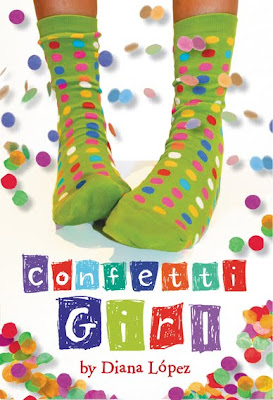
Diana thanks for this interview for La Bloga. How would you present the book to the audience? Tell us about it.
In Confetti Girl, Apolonia Flores (or Lina), is a sock-loving, volleyball player with a major crush on a boy named Luís. She’s going through a hard time. Her mother died a year ago, and she has figuratively lost her father, too, because all he does is read books. Lina reacts by sabotaging her English grade, which introduces even more problems. Meanwhile, her best friend, Vanessa, struggles with a recently-divorced mom who now hates all men and who cooks eggs for breakfast, lunch, and dinner (even Thanksgiving), so she can save the eggshells for her cascarones, the only activity that seems to give her peace of mind. So how are these girls going to rescue their parents, and themselves, from the consequences of anger and grief?
You begin each chapter with a popular dicho. Who was source of inspiration? Did you grow up with dichos?
My parents’ favorite sayings were actually in English. “If you start something, finish it,” “If you’re going to do something, do it right,” and “If you make a mistake, fix it.” I heard those quotes when cleaning, sewing, or doing homework, and even now, they run through my head nearly every day. They’re good mantras for a writer, for everything, if you think about it.
But occasionally, I heard dichos like the ones in the book, usually from an uncle, a teacher, or lady at church, always someone who was an elder, who was trying to guide me somehow. So including them in the book, as something a father would say to his child, felt natural. I started asking around, collecting dichos from relatives and friends, from the internet, from dicho dictionaries (they’re out there!). I’m still amazed by how many there are.
Your novel revolves around cascarones. The titles of your chapters refer to eggs or eggshells. Where did you get your idea to include that imagery in the book?
I had just finished describing Lina’s house, all those books, and in the second chapter, she visits Vanessa, her friend across the street. I really enjoyed writing about a house full of books, and I wanted something visual for her friend’s house too. So I was brainstorming as I drove home from work one day, and that’s when I saw one of my neighbors. She was in a rocking chair with cartons of eggs all around and a “cascarones for sale” sign. There are people in San Antonio who save eggshells all year round, so they can sell cascarones during Easter and Fiesta. “That’s it!” I thought. “Vanessa’s house is full of cascarones!”
But I had a problem. The scene was happening in fall, and cascarones are for spring. That’s when I realized that Vanessa’s mom has a cascarones-making obsession. This detail really sharpened the character for me. Why is she making cascarones? I wondered. And then her whole story spilled out.
I had different chapter titles originally, but when I realized that the cascarones were functioning as a symbol in the book, I decided to highlight the egg imagery. I have to admit that one of my favorite experiences has been introducing cascarones to people who have never heard of them. I took four dozen to the ALA conference in Chicago, and we made a wonderful, joyful mess.
Lina, your protagonist, loves socks and to play volleyball. How much of you can we find in Lina? What do you like to do?
Like Lina, I experienced that embarrassing sense of awkwardness. Tween bodies don’t stretch out proportionally, and for a while, I had these ridiculously long legs. I didn’t know what to do with them, how to move without tripping over myself. Plus, I was too tall to hide, and as a shy girl, all I wanted to do was hide. The only time I felt comfortable, (more than that, I felt powerful, free, even beautiful) was in track. I could run. I ran faster than all the girls and most of the guys. That’s what people remember about me. So I’m very aware of how an activity like volleyball (or band or student council) can rescue a young person from those horribly insecure years.
I still run, only today, I run slower than all of the guys and most of the girls. It doesn’t matter. Running is how I meditate and problem-solve. And if I don’t run, I lift weights with my husband or walk a big circle around the neighborhood. I also like to play European board games like Settlers of Catan, Notre Dame, or Princes of Florence. Collectively, my friends and I have a wonderful library of games.
You are dealing with two serious issues: the divorce of parents and the loss of a mother. There are many students in middle schools dealing with similar situations. What is your message for these children?
I wanted to explore how people grieve. Some, like Lina’s father, withdraw, while others, like Vanessa’s mom, blame the whole world. So how do you get past your sorrow or anger? And how do these emotions affect those you love, those you haven’t lost?
For me, stories start with questions, questions I don’t know the answers to. If I were wise, I wouldn’t need to write. If I were wise, I’d be a priest or counselor. But I’m a writer, one who believes Robert Frost when he says, “Poems should delight first, teach later.” So I hesitate to give a message because that’s something the reader needs to conclude for himself. But if I have to, the message would be something like this . . . look around. Who’s in your house? Who’s in your neighborhood? Who’s at your school, your church, or your job? When someone has gone, don’t forget that someone else has stayed.
Confetti Girl is your first middle grade novel. How was the switch from writing for adults to writing for children?
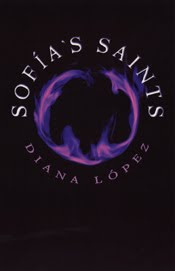 I got different reactions when I told people I was writing for middle-school readers. Some thought it was a great idea and others thought I was crazy. But I spent so many years teaching that age group, which means I’ve read thousands of pages written by them. They are all grown up now, but this book is still my gift to them, my thank you.
I got different reactions when I told people I was writing for middle-school readers. Some thought it was a great idea and others thought I was crazy. But I spent so many years teaching that age group, which means I’ve read thousands of pages written by them. They are all grown up now, but this book is still my gift to them, my thank you.
Saying that writing for children is easier than writing for adults is like saying short stories are easier than novels. If you've tried different genres, you know this isn’t true. Each has its own set of conventions, of challenges, but the things that make a good adult story (character, plot, language) are the things that make a good story for young people.
The toughest challenge for this genre is the point of view. You have to be a child again, which means resisting the urge to write retrospectively (the wise adult looking back on her innocent childhood). My solution was to be in the moment as much as possible. That’s why I chose to write the novel in present tense. It gave me the ability to write without hindsight.
I also want to add, if you are going to write for young people, you need to read young people’s books. You also have to spend time with them . . . listen and let them be your teachers . . . don’t ever underestimate how intelligent they are and how much they have to offer.
How was the process from manuscript to publication for Confetti Girl?
I had registered to go to the Latino Writers Conference in Albuquerque, and before I went, I researched the agents who would be there. That’s how I learned about Stefanie Von Borstel of Full Circle Literary. She represented children’s fiction and had a special interest in minority literature. At the time, I had two chapters of Confetti Girl. I gave them to Stefanie and she read them in her hotel room that night. She was very enthusiastic, and I could tell she understood my vision for the book. That’s what you want in an agent, someone who loves your work and trusts your vision. But, I have to add, Stefanie is also a good editor. She taught me a lot about writing for this age group.
I also learned a lot from Alvina Ling, my editor at Little Brown. I had read Firegirl and Year of the Dog, two books that Alvina edited and that I highly recommend. I knew I was in good hands. She had wonderful suggestions, but she was also respectful about changes I did not want to make. At some point in the process, your writing moves from a solitary endeavor to a partnership between the author, agent, and editor. I couldn’t have asked for a better team.
And, I just received more publishing news. Scholastic will release a paperback edition of Confetti Girl next spring!
What inspires you to write? What are you working on now?
I’ll give a short response but please know that this isn’t a complete answer. I have many, many inspirations.
I dedicated this book to my parents, so I want to give them credit for inspiring me. They weren’t avid readers or writers, but they were very project-oriented. My mother sewed, and my father designed and built things – a new bathroom, a jewelry box, bunk beds. They always had a project before them, and the same holds true today. Their example taught me about planning and perseverance. And it also made me ask, what is my talent? That’s what I thought about as I watched my parents make these beautiful things. And I concluded that if I’m going to have a meaningful life, I have to engage in some type of creative process. For me, that process is writing.
What am I working on now? Another book for middle grade readers. It’s called Breath Sisters, and it’s about a girl named Windy who seeks popularity by betraying her best friend and playing the dangerous choking game.
Thanks Diana, what are your final words for our readers at La Bloga?
I just want to say thanks for reading my interview and for supporting Latino writers by visiting La Bloga. I’ve got a lot of events coming up. If I’m in your area, put on your wackiest socks and stop by. I love meeting new people and touching base with old friends.
Diana’s Upcoming Events
September 15, 2009
Reading and signing 5:00 to 7:00 at The Twig, San Antonio
September 19, 2009
reading at 1:00 p.m. Book People, Austin
September 25, 2009
Book signing at Region 20 in San Antonio
September 26, 2009
Hispanic Heritage Month Panel at Barnes & Noble San Pedro Crossing, San Antonio; 1:00 p.m.
If you shop at the Barnes & Noble at San Pedro Crossing on September 26th, please mention the Society of Hispanic and Latino Writers at the register. B&N is donating a percentage of its sales to this non-profit organization that supports local writers.October 1, 2009
Writing Warriors; Reading and school visits, Victoria, Texas
October 9, 2009
A Quilt of Words: Creative Writing Workshop; Hispanic Mothers & Daughters Conference; St. Philip's College, Heritage Room, 6:00 to 7:00 PM
October 15, 2009
Reception and Book Signing at St. Philip's College; Heritage Room, 2:00 to 4:00 PM
October 30 - November 1, 2009
Texas Book Festival; Austin, Texas
November 14, 2009
Corpus Christi Libraries' Centenniel Celebration
Reading and Book Signing at Greenwood Library, 2:00 p.m.
November 15, 2009
Reading and Book Signing at Barnes & Noble in Corpus Christi at 1:00 PM
December 2, 2009
Lunch Bunchers Book Club in San Antonio
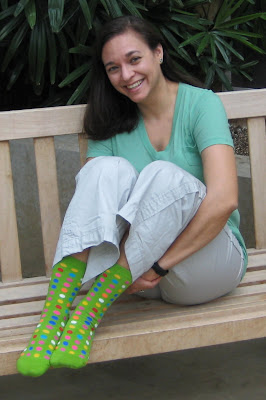 Diana López is the author of the adult novella, Sofia’s Saints, published by Bilingual Review Press in 2002, and the middle grade novel, Confetti Girl, published by Little Brown in 2009. She is also one of the featured authors in Hecho en Tejas, an anthology of writing by Texas-Mexicans (University of New Mexico Press, 2007). Her short stories have appeared in Chicago Quarterly Review, Sycamore Review, and New Texas Journal. She has been featured on NPR’s Latino USA and is the 2004 winner of the Alfredo Cisneros Del Moral Award, sponsored by author Sandra Cisneros. Diana López lives in San Antonio, Texas where she teaches at St. Philip’s College.
Diana López is the author of the adult novella, Sofia’s Saints, published by Bilingual Review Press in 2002, and the middle grade novel, Confetti Girl, published by Little Brown in 2009. She is also one of the featured authors in Hecho en Tejas, an anthology of writing by Texas-Mexicans (University of New Mexico Press, 2007). Her short stories have appeared in Chicago Quarterly Review, Sycamore Review, and New Texas Journal. She has been featured on NPR’s Latino USA and is the 2004 winner of the Alfredo Cisneros Del Moral Award, sponsored by author Sandra Cisneros. Diana López lives in San Antonio, Texas where she teaches at St. Philip’s College.
Confetti Girl, written by Diana Lopez, comes across much like its cover: bright, fresh, and full of life. I can't tell you how much I love the cover and the main character shines just bright.
Apolonia "Lina" Flores, is a self-proclaimed sock enthusiast, loving socks of all colors, shapes, and designs, a slightly crazy hobby giving hint to her slightly crazy life. Her house is filled to the brim with her father's books, which wouldn't be such a bad thing is he hadn't named her "Apolonia," after a character in one of them and she's growing up without a mom, as she passed away a few years before. Lina has lots of questions about life and isn't getting a whole lot of answers out of her dad....or really out of anyone.
 Typical middle school issues mingle nicely with the tragedy that overshadows Lina and her dad, things like boys, crushes, grades, and friendships. Lina loves science and sports, but her English grade? Not so great. The boy she likes? Not sure if he really likes her back. And her best friend? Acting super-weird since she got a boyfriend.
Typical middle school issues mingle nicely with the tragedy that overshadows Lina and her dad, things like boys, crushes, grades, and friendships. Lina loves science and sports, but her English grade? Not so great. The boy she likes? Not sure if he really likes her back. And her best friend? Acting super-weird since she got a boyfriend.
Lopez proved to be a great voice for middle grade girls, with a fresh, likable main character, and true-to-life situations. I saw a lot of myself in Lina, growing up in a single parent household, not knowing how to ask the questions I always wanted to ask and not always knowing just who to trust. A bright and colorful plot to match a bright and colorful cover!
Recommended for library shelves.
To learn more or to purchase, click on the book cover above to link to Amazon.
Confetti Girl
Diana Lopez
221 pages
Middle Grade Fiction
Little, Brown Young Readers
9780316029551
June 2009
 Our favorite picks for summer reading continue this week with a list of the best titles to keep kids in fifth and sixth grade reading during sunny summer days (and cloudy ones, too!)
Our favorite picks for summer reading continue this week with a list of the best titles to keep kids in fifth and sixth grade reading during sunny summer days (and cloudy ones, too!) Confetti Girl by Diana Lopez
Confetti Girl by Diana Lopez Turtle in Paradise by Jennifer L. Holm
Turtle in Paradise by Jennifer L. Holm One Crazy Summer by Rita Williams-Garcia
One Crazy Summer by Rita Williams-Garcia The One and Only Ivan by Katherine Applegate
The One and Only Ivan by Katherine Applegate









Sounds so awesome Danette! Glad it was such a great experience for you :) Chicago is my favorite city and your name-dropping is jealousy-inducing (I would love to meet Kate and Ingrid in person too!)
:)
Savvy was such a wonderful book! How very cool you got to meet her! I so heart Chicago. I think I could live there. I have actually had to hail a cab there and it was a little embarassing, so I am glad they made it easier for you! (See ya Thursday!)
I'm exhausted just hearing all the things you did and the folks you talked to. I think I need a nap now.
Oh, you are adorable!
And I love your dad.
Wow, what an experience - from hotel room to talks and signings and lovely people! What a great trip, Danette, and congrats!
Boni,
Heh-heh, name dropping is fun.
Sandy and Boni,
How has everyone else been to Chicago so many times but this was my first real experience? For the record, I will say I've been to London. And DC.
My husband looked at my pics (I have more!) and pointed out the Sears Tower. Have you ever been there?
Charles,
I took a big long nap the day after I got home!
Barbara,
Aw, shuckins! Thanks! My dad was a great guy, sweet, and a big ham.
Thanks, Kim! It was a wonderful trip.
Thanks for sharing your fun experience. I love the cover of your book, and now that you have pointed out that is was created by the same artist who did the cover for Savvy, I see the resemblance. Beautiful!